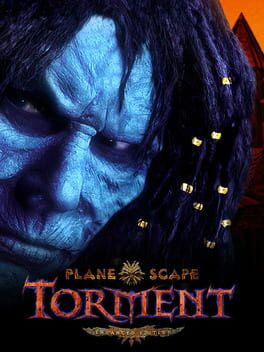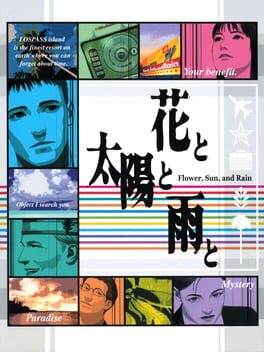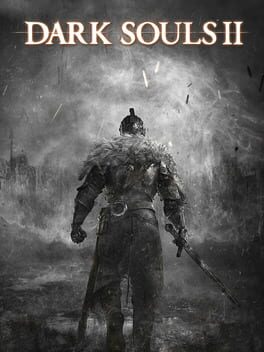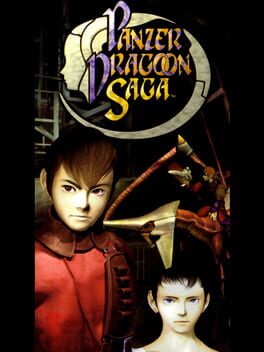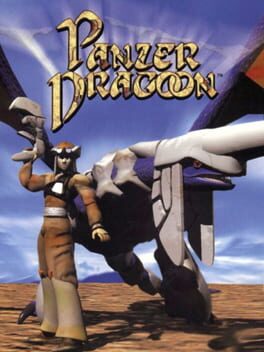neferpitoou
12 reviews liked by neferpitoou
This is potentially the most immersive video game ever made. The haunting music, well-crafted dungeons, ever-present environmental storytelling, and plethora of missable content in the form of hidden areas, items and enemies make this an absolute gem, sure to fill the player with a sense of wonder and make them feel rewarded for every bit of exploration as they delve into the depths of the Ancient City, provided the player is armed with enough wit and patience to make it through the perilous journey.
I tend to dislike games with ham-fisted stories, which seem to think that they are movies, and can keep the player invested into their story. Some games, like God of War 4 and Silent Hill 2, can pull this off, but most games stumble and embarrass themselves, leading to an experience focused on a stupid, unsatisfying gimmick. With this perspective, it's easy to appreciate a game which lets you discover the story for yourself by observing the environments trodden down by the pressures of civil war and the forces of time, and taking in the sights, taking note of whatever feelings passing across these intricate structures and barren landscapes might bring.
Overall, this is a game which arouses a true sense of adventure within me — genuine intrigue, awe and amazement at what can be achieved with sounds and images within the realm of video games. Sure, the game may not have much literary value, but if you come in with the intent of going on a real adventure into a treacherous land, you might discover an experience that will forever stick with you, making all other exploration games pale in comparison.
I tend to dislike games with ham-fisted stories, which seem to think that they are movies, and can keep the player invested into their story. Some games, like God of War 4 and Silent Hill 2, can pull this off, but most games stumble and embarrass themselves, leading to an experience focused on a stupid, unsatisfying gimmick. With this perspective, it's easy to appreciate a game which lets you discover the story for yourself by observing the environments trodden down by the pressures of civil war and the forces of time, and taking in the sights, taking note of whatever feelings passing across these intricate structures and barren landscapes might bring.
Overall, this is a game which arouses a true sense of adventure within me — genuine intrigue, awe and amazement at what can be achieved with sounds and images within the realm of video games. Sure, the game may not have much literary value, but if you come in with the intent of going on a real adventure into a treacherous land, you might discover an experience that will forever stick with you, making all other exploration games pale in comparison.
Killer7
2005
Demon's Souls
2009
FYI this is still the best one. Most inspired soundtrack, most painterly and phantasmagorical setting, best hub zone and maiden, and laden with the most lyrical sense of tragedy and loss. Sure the gameplay is a little bit clunky compared to (some of) the later titles, but Deal With It!!
it makes me deeply sad that the online has been discontinued and we haven't heard anything about a re-release. Still totally playable offline, but the full experience deserves to be remembered and kept alive!
EDIT: WAIT I SAID RE-RELEASE NOT SLEEK HIGH POLY REMAKE DEVOID OF ATMOSPHERE AND RESTRAINT!!! WHY MUST THE DEVILS AT BLUEPOINT CONSPIRE TO MURDER EVERYTHING I LOVE
it makes me deeply sad that the online has been discontinued and we haven't heard anything about a re-release. Still totally playable offline, but the full experience deserves to be remembered and kept alive!
EDIT: WAIT I SAID RE-RELEASE NOT SLEEK HIGH POLY REMAKE DEVOID OF ATMOSPHERE AND RESTRAINT!!! WHY MUST THE DEVILS AT BLUEPOINT CONSPIRE TO MURDER EVERYTHING I LOVE
After taking 75,000 steps in Flower, Sun and Rain, you unlock the “Movement Speed UP” ability, which allows you to sprint, granting the player a much needed reprieve from Sumio Mondo’s endless march across Lospass Island. Only, the average player will never know this power up exists. I completed the game taking precisely 20,193 steps, a count which I imagine is generally higher than the average player, on account of me not knowing where to go and having to take a few additional agonizing journeys to and from the Hotel Flower, Sun and Rain. This begs the question: why even add such a thing in the first place?
Flower, Sun and Rain stretches its identity as a “video game” so thin that it only loosely fits the definition. Gameplay consists of mind-numbingly walking to various destinations around the island. Every puzzle is solved in the exact same way. Test the different colored jacks, find the corresponding passage in the guidebook, and then input the answer. Yet, despite not being similar to most games on a mechanical level, Flower, Sun and Rain is one of the most “gamey” video games I have ever played. Upon reaching certain milestones on your pedometer the game fades to black, and you are rewarded with largely worthless power ups, as if to shake the player out of their walking-induced trance and say, “Hey, you remember you’re still playing a video game, right? That’s what this is!” Similarly, characters will often break the 4th wall and recognize that they are, in fact, in a video game. It’s extremely obvious that all of these facts are meant to add up to some form of critique.
My reading of Flower, Sun and Rain interprets the work as a critique of the obsessive push toward realism in gaming. Nowhere is this critique more present than in Request 14: Träumerei. Directly following two chapters where the player controls characters who are not Sumio Mondo, the hotel manager Edo Macalister chides Sumio, saying that in order to make up for missing two chapters of action, he should prepare for lots of walking. This is precisely what happens. The player must walk from the Hotel and the wheat fields, two points which are about as far away from each other as possible, twice. Then, the player walks up to the fourth floor of the hotel another eight times, while Sumio is frustratingly locked into just walking. Running in the hotel rooms and stairways is not permitted, of course. After my first two trips and my first four journeys up and down the stairwell, I was reaching my wit’s end. However, that is when Ken appears, who is notably the only person on the island who has access to a form of transportation. Long story short, you “borrow” Ken’s bike, and it acts as a form of fast-travel for the chapter, and cuts down on the length of the chapter considerably. However, the scenario is very much “unrealistic” and somewhat out of character for Sumio. FSR asserts through this mechanic that obsession with realism is only valuable to a certain point. If a piece is injected with too much realism, it will lead to an unfun experience, as is the case in many sections of FSR. There were many times throughout the game where I was not necessarily having fun, but just because the game isn’t fun all the time doesn’t mean it can’t be a great experience.
There’s so much to be said for the quality of writing in this game. I love how they are able to so effortlessly allow the player to identify with Sumio. I don’t agree that the game is meant to be obtuse as a way to make fun of people who like games, far from it. I interpreted that you were supposed to be laughing along with many jokes at the expense of the player and Sumio, but these ideas would be better saved for a longer piece. Flower, Sun and Rain is among my favorite games of all time, and I recommend it to anyone with the patience to see it through to the end.
Flower, Sun and Rain stretches its identity as a “video game” so thin that it only loosely fits the definition. Gameplay consists of mind-numbingly walking to various destinations around the island. Every puzzle is solved in the exact same way. Test the different colored jacks, find the corresponding passage in the guidebook, and then input the answer. Yet, despite not being similar to most games on a mechanical level, Flower, Sun and Rain is one of the most “gamey” video games I have ever played. Upon reaching certain milestones on your pedometer the game fades to black, and you are rewarded with largely worthless power ups, as if to shake the player out of their walking-induced trance and say, “Hey, you remember you’re still playing a video game, right? That’s what this is!” Similarly, characters will often break the 4th wall and recognize that they are, in fact, in a video game. It’s extremely obvious that all of these facts are meant to add up to some form of critique.
My reading of Flower, Sun and Rain interprets the work as a critique of the obsessive push toward realism in gaming. Nowhere is this critique more present than in Request 14: Träumerei. Directly following two chapters where the player controls characters who are not Sumio Mondo, the hotel manager Edo Macalister chides Sumio, saying that in order to make up for missing two chapters of action, he should prepare for lots of walking. This is precisely what happens. The player must walk from the Hotel and the wheat fields, two points which are about as far away from each other as possible, twice. Then, the player walks up to the fourth floor of the hotel another eight times, while Sumio is frustratingly locked into just walking. Running in the hotel rooms and stairways is not permitted, of course. After my first two trips and my first four journeys up and down the stairwell, I was reaching my wit’s end. However, that is when Ken appears, who is notably the only person on the island who has access to a form of transportation. Long story short, you “borrow” Ken’s bike, and it acts as a form of fast-travel for the chapter, and cuts down on the length of the chapter considerably. However, the scenario is very much “unrealistic” and somewhat out of character for Sumio. FSR asserts through this mechanic that obsession with realism is only valuable to a certain point. If a piece is injected with too much realism, it will lead to an unfun experience, as is the case in many sections of FSR. There were many times throughout the game where I was not necessarily having fun, but just because the game isn’t fun all the time doesn’t mean it can’t be a great experience.
There’s so much to be said for the quality of writing in this game. I love how they are able to so effortlessly allow the player to identify with Sumio. I don’t agree that the game is meant to be obtuse as a way to make fun of people who like games, far from it. I interpreted that you were supposed to be laughing along with many jokes at the expense of the player and Sumio, but these ideas would be better saved for a longer piece. Flower, Sun and Rain is among my favorite games of all time, and I recommend it to anyone with the patience to see it through to the end.
Dark Souls II
2014
A heavily derivative experience that overlooks and misunderstands most of what made its predecessor great.
Generic bosses, terrible movement, ridiculous enemy placement, and some of the worst level designs in a game are some of the numerous burdens Dark Souls II carries. Still, it has interesting combat and multiplayer innovations and is not absolutely unberable like its counterpart, Scholar of the First Sin, which is an experience only masochists can enjoy.
This is a deeply flawed game, but it can still be enjoyed by patient players.
Generic bosses, terrible movement, ridiculous enemy placement, and some of the worst level designs in a game are some of the numerous burdens Dark Souls II carries. Still, it has interesting combat and multiplayer innovations and is not absolutely unberable like its counterpart, Scholar of the First Sin, which is an experience only masochists can enjoy.
This is a deeply flawed game, but it can still be enjoyed by patient players.
“Shouldn’t you be heading home as well?”
–
The Legend of Zelda: Majora’s Mask is fundamentally a game about grief, regret, and most importantly, healing. At the heart of this core philosophy is the Song of Healing which, when played, emits an appropriate aura of warm, pink hearts. It is perhaps a happy coincidence that the notes that compose the song in Majora’s Mask are the exact notes used to play Saria’s Song, albeit backwards. The contrast between both songs is surreal: while Saria’s Song provides superficial happiness in the form of dance, the Song of Healing provides genuine happiness in the form of a spiritual, comforting embrace. Given how the Skull Kid is implied to be the same Skull Kid that the Hero of Time befriended in the past, though, I strongly doubt this was a connection formed through pure chance.
The Song of Healing initially begins a sorrowful, descending tune, and dwells on it for a moment, as if to acknowledge the despair and sadness of the listener. Halfway through the song, however, the piano reascends up the scale, and the song takes on a more bittersweet sound, uplifting the spirits of those listening, wrapping them in a sense of comfort that aims to give them closure. Whether it be a lifelong promise, a fulfilled purpose or a brief moment of pleasure in a period of disarray, the Song of Healing soothes the soul, both metaphorically and physically, with the latter being represented in the form of Masks.
–
Masks in Majora’s Mask are seen as the culmination of one’s purest form of happiness, only formed once their troubles have been answered. To obtain these masks, the Hero of Time must perform various tasks and acts of goodwill throughout Termina to give joy to the people there. It can be something as mundane as reforming the Great Fairy in Termina, or something emotionally profound, like saving a helpless father possessed by a Gibdo, allowing him to reunite with his daughter who not only protected him, but also comforted him as soon as he regained consciousness. These individuals all have their wishes and desires fulfilled by a magical child who quite literally appeared from nowhere, and acquired happiness through his selfless efforts.
However, this is Majora’s Mask - the masks aren’t only a form of happiness, they’re also a form of closure.
There’s the constant underlying factor of the Moon that will inevitably crash into Termina if the hero does not act. No matter how much the joyful music of Clock Town attempts to mask the fate of its residents, it eventually gives way to an erratic sense of discomfort and imminent dread. Slowly but surely, Termina comes to terms with its terminal fate. All the Hero of Time is able to do while he rushes through the various landscapes is offer the people of Termina a sense of closure. The Bunny Hood Mask, arguably the most important optional mask in the game, requires the hero march a coop of chicks into maturity so their caretaker gets to see them fully grown before moonfall. The Goron and Zora Masks are acquired by offering their inhibitors closure - Darmani by promising that the Gorons will be saved from the perilous snowfall, Mikau by promising that his bandmates are able to perform at the Carnival of Time. A particularly noteworthy mention would be Anju and Kafei’s Couples’ Mask, which requires player input throughout the entirety of Majora’s Mask’s 3-day cycle. The extensive length of this quest is a beautiful reminder that love requires patience to nurture, and that when both parties are so dedicated to each other that they’re willing to overcome all trials and tribulations to be with each other, their love can transcend all boundaries, even time.
–
Link originated from humble beginnings. He spent most of his early life believing he was one of the Kokori, despite the lack of a fairy companion. It was quaint and simple, yet it was sufficient. Then the events of Ocarina of Time shattered the facade of his reality, revealing that the entire foundation of his existence was a fabrication, built to mask the truth behind his destiny. It was Link who withheld the burden of growing up against his own will, in order to fulfill the prophecy that foretold the prevailing victory of the forces of light against a castle of pure evil. He carried the weight of the world on his shoulders, and despite his success, his deeds are chalked off as an obscure legend to most.
Despite being allowed to return to his childhood, the ordeal ensured Link’s life would never recover. To him, Kokori Forest no longer felt like a true home. And so, in search of the one remnant of his fragmented childhood that remained ever-present throughout his journey, Navi, he inadvertently found himself saving another different world. Once again, however, the curse of being the Hero of Time burdened him, and all the memories he formed with the people of Termina were constantly swept away in the white blanket of time as he rewinded the clock to eventually save their lives. In the end, his selfless acts touched the souls residing in Termina, bringing forth positive change in their lives. However, all that lingers in Termina is a fleeting memory of a hero who came and went, much like the spring breeze.
Throughout the entire journey, Link is the one to play the Song of Healing for all the wounded souls he came across. Despite this, he has never been the recipient of the song, with even the Happy Mask Salesman teaching him the song to pacify the Deku Spirit inhibiting his soul. The mantle of ‘Hero of Time’ is one that requires sacrifice - by the end of the game, despite all his efforts, Link never reaches his goal: he never finds Navi, and he is once again forced to become a mere passerby of a world he saved as he continues his hopeless quest.
Ultimately, Link is the saviour of two worlds, yet is a stranger of both. He can never truly call Hyrule or Termina his true home, as he has no calling and no longer serves a purpose for either world. He is forever displaced in time, cursed by his destiny, trapped in a mind that experienced insurmountable trauma others can barely comprehend. He departed the living realm without ever finding full acceptance, regretting his inability to pass on his learnings, and regretting living as an anonymous entity to the world. Such is the tragedy of the Hero of Time.
–
You saved Hyrule. You saved Termina. But did you save yourself?
Did you allow yourself the time to heal?
Final score: 10/10
Focus: The Song of Healing, and how it connects to the self-sacrificial tragedy of the Hero of Time and the burden of destiny.
Theme: Healing and self-sactifice.
ShinGen's "Greatest Game of All Time" Certification
Review 77.
–
The Legend of Zelda: Majora’s Mask is fundamentally a game about grief, regret, and most importantly, healing. At the heart of this core philosophy is the Song of Healing which, when played, emits an appropriate aura of warm, pink hearts. It is perhaps a happy coincidence that the notes that compose the song in Majora’s Mask are the exact notes used to play Saria’s Song, albeit backwards. The contrast between both songs is surreal: while Saria’s Song provides superficial happiness in the form of dance, the Song of Healing provides genuine happiness in the form of a spiritual, comforting embrace. Given how the Skull Kid is implied to be the same Skull Kid that the Hero of Time befriended in the past, though, I strongly doubt this was a connection formed through pure chance.
The Song of Healing initially begins a sorrowful, descending tune, and dwells on it for a moment, as if to acknowledge the despair and sadness of the listener. Halfway through the song, however, the piano reascends up the scale, and the song takes on a more bittersweet sound, uplifting the spirits of those listening, wrapping them in a sense of comfort that aims to give them closure. Whether it be a lifelong promise, a fulfilled purpose or a brief moment of pleasure in a period of disarray, the Song of Healing soothes the soul, both metaphorically and physically, with the latter being represented in the form of Masks.
–
Masks in Majora’s Mask are seen as the culmination of one’s purest form of happiness, only formed once their troubles have been answered. To obtain these masks, the Hero of Time must perform various tasks and acts of goodwill throughout Termina to give joy to the people there. It can be something as mundane as reforming the Great Fairy in Termina, or something emotionally profound, like saving a helpless father possessed by a Gibdo, allowing him to reunite with his daughter who not only protected him, but also comforted him as soon as he regained consciousness. These individuals all have their wishes and desires fulfilled by a magical child who quite literally appeared from nowhere, and acquired happiness through his selfless efforts.
However, this is Majora’s Mask - the masks aren’t only a form of happiness, they’re also a form of closure.
There’s the constant underlying factor of the Moon that will inevitably crash into Termina if the hero does not act. No matter how much the joyful music of Clock Town attempts to mask the fate of its residents, it eventually gives way to an erratic sense of discomfort and imminent dread. Slowly but surely, Termina comes to terms with its terminal fate. All the Hero of Time is able to do while he rushes through the various landscapes is offer the people of Termina a sense of closure. The Bunny Hood Mask, arguably the most important optional mask in the game, requires the hero march a coop of chicks into maturity so their caretaker gets to see them fully grown before moonfall. The Goron and Zora Masks are acquired by offering their inhibitors closure - Darmani by promising that the Gorons will be saved from the perilous snowfall, Mikau by promising that his bandmates are able to perform at the Carnival of Time. A particularly noteworthy mention would be Anju and Kafei’s Couples’ Mask, which requires player input throughout the entirety of Majora’s Mask’s 3-day cycle. The extensive length of this quest is a beautiful reminder that love requires patience to nurture, and that when both parties are so dedicated to each other that they’re willing to overcome all trials and tribulations to be with each other, their love can transcend all boundaries, even time.
–
Link originated from humble beginnings. He spent most of his early life believing he was one of the Kokori, despite the lack of a fairy companion. It was quaint and simple, yet it was sufficient. Then the events of Ocarina of Time shattered the facade of his reality, revealing that the entire foundation of his existence was a fabrication, built to mask the truth behind his destiny. It was Link who withheld the burden of growing up against his own will, in order to fulfill the prophecy that foretold the prevailing victory of the forces of light against a castle of pure evil. He carried the weight of the world on his shoulders, and despite his success, his deeds are chalked off as an obscure legend to most.
Despite being allowed to return to his childhood, the ordeal ensured Link’s life would never recover. To him, Kokori Forest no longer felt like a true home. And so, in search of the one remnant of his fragmented childhood that remained ever-present throughout his journey, Navi, he inadvertently found himself saving another different world. Once again, however, the curse of being the Hero of Time burdened him, and all the memories he formed with the people of Termina were constantly swept away in the white blanket of time as he rewinded the clock to eventually save their lives. In the end, his selfless acts touched the souls residing in Termina, bringing forth positive change in their lives. However, all that lingers in Termina is a fleeting memory of a hero who came and went, much like the spring breeze.
Throughout the entire journey, Link is the one to play the Song of Healing for all the wounded souls he came across. Despite this, he has never been the recipient of the song, with even the Happy Mask Salesman teaching him the song to pacify the Deku Spirit inhibiting his soul. The mantle of ‘Hero of Time’ is one that requires sacrifice - by the end of the game, despite all his efforts, Link never reaches his goal: he never finds Navi, and he is once again forced to become a mere passerby of a world he saved as he continues his hopeless quest.
Ultimately, Link is the saviour of two worlds, yet is a stranger of both. He can never truly call Hyrule or Termina his true home, as he has no calling and no longer serves a purpose for either world. He is forever displaced in time, cursed by his destiny, trapped in a mind that experienced insurmountable trauma others can barely comprehend. He departed the living realm without ever finding full acceptance, regretting his inability to pass on his learnings, and regretting living as an anonymous entity to the world. Such is the tragedy of the Hero of Time.
–
You saved Hyrule. You saved Termina. But did you save yourself?
Did you allow yourself the time to heal?
Final score: 10/10
Focus: The Song of Healing, and how it connects to the self-sacrificial tragedy of the Hero of Time and the burden of destiny.
Theme: Healing and self-sactifice.
ShinGen's "Greatest Game of All Time" Certification
Review 77.
Panzer Dragoon Saga
1998
sorry 4 the beyond tired analogy but this game is like a frail and defiant flower blooming uniquely through the rubble of its own technical limitations. It's simultaneously a nearly forgotten relic and an undeniable genesis point / clear creative influence for countless other game achievements for both the fractured Team Andromeda artists themselves and other inspired gamedevs (Rez, the team ICO oeuvre, thatgamecompany, from software, etc). An eerie and sensitive story with so much more brevity and respect for player time than typical JRPGS (probably both by intent and as a technical necessity) but also an unparalleled amount of spaciousness and quiet power. The still unimitated positional combat system is a complete revelation and so so beautiful in its graphic framing and expressivity. The closest thing I can think of is the (also spellbinding) Evrae battle from FFX, but magnified tenfold and constantly eclipsing the presumed limits of its prior majesty over the course of an entire game. The dynamism and propulsive grace within the compositions of each battle tableau grant an ATB-based jrpg the sensoral exhilaration of an Ace Combat game. The fact that the balancing is a bit too easy hardly matters when PDS remains such a bold declaration and unmatched proof of concept for an entire school of systemic evolutions it was denied the chance to ever iterate upon. These battles set my imagination on fire!!!
The game is tragically inaccessible and unretrievable (the source code is completely lost and the effort/interest level required to reverse engineer a faithful re-release seems unlikely), but it also feels fitting for something with such a lamentful cadence to end up as a lingering piece of gaming hauntology. if fucking bluepoint or whoever decide to remake this absolutely peerless achievement in HD i will officially detonate the vest.
Emulate on Yabause/Yaba Sanshiro, SSF, or Satourne, the full game runs extremely well now! if you are having issues 4 real find me on social and message me and i will walk your ass through the whole process because truly everyone interested in games should play this game
The game is tragically inaccessible and unretrievable (the source code is completely lost and the effort/interest level required to reverse engineer a faithful re-release seems unlikely), but it also feels fitting for something with such a lamentful cadence to end up as a lingering piece of gaming hauntology. if fucking bluepoint or whoever decide to remake this absolutely peerless achievement in HD i will officially detonate the vest.
Emulate on Yabause/Yaba Sanshiro, SSF, or Satourne, the full game runs extremely well now! if you are having issues 4 real find me on social and message me and i will walk your ass through the whole process because truly everyone interested in games should play this game



